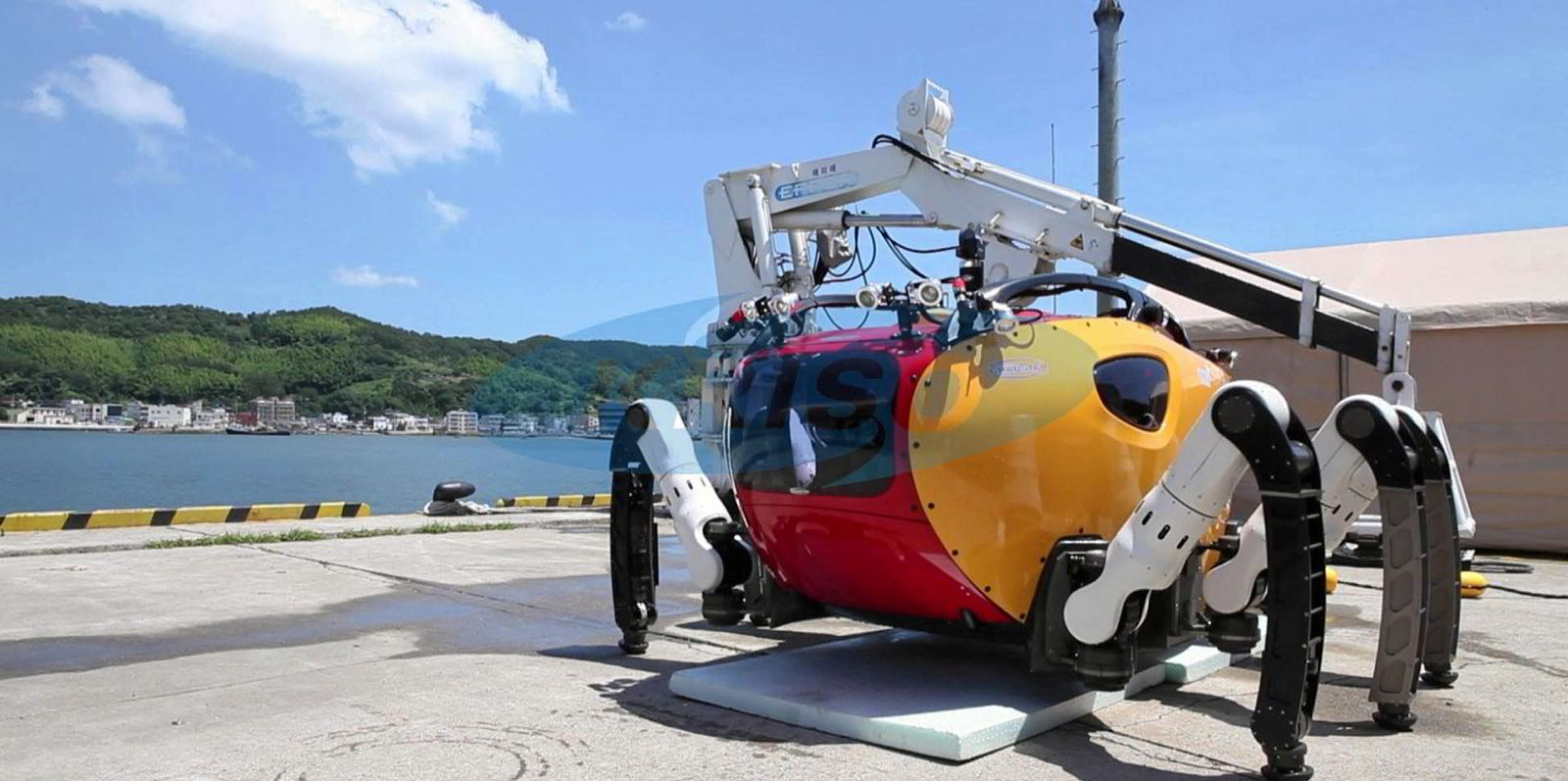With six legs, 30 joints and a laser-guided two-metre–long robotic arm, the Crabster CR200 has built-in advantages when it comes to deep cleaning hard-to-reach mucky corners.
The giant crab robot was developed a decade ago by researchers at the Korean Institute of Ocean Science and Technology (KIOST) to inspect wrecks and scour the seafloor in tricky tidal currents. With some retooling, it will now be put to the test for the great shipping challenge of the 21st century — bringing down harmful emissions.
The Crabster, with its soon-to-be-fitted robotic arm, is just the latest iteration of a new wave of machines designed to examine and clean hulls to reduce drag and cut fuel use while limiting damage to coatings.
Reducing biological fouling is just one of myriad potential solutions to improve vessel efficiency that shipowners are considering in the absence of a clear favourite in the race to develop alternative cleaner fuels.
UK-based consultancy UMAS said the uncertainty over alternative fuels means that the industry has to focus on efficiency savings and retrofitting to start the process to cut emissions by half by 2050 based on 2008 levels — the current goal of the International Maritime Organization.
Shipping needs to improve efficiency by 40% by 2030, compared to 2018, to remain on track with ambitions to limit global warming to within 1.5C of pre-industrial levels, it said.
Green tech expert Njord, which is working with more than 40 shipowners, has a menu of some 30 to 40 different technologies and approaches that it selects from.
Typically, it suggests a package of nine different solutions tailored to a particular ship, said managing director Frederik Pind.
“Paints and propellers are the very traditional initial retrofits but we’re seeing that there’s much more that can be done.
“Most things can be done as the vessel operates — it’s a common misconception that they can’t.”
Advanced hull coatings are among the most potentially effective ways to improve a ship’s efficiency with gains of up to 10% over existing performance, according to UMAS. Keeping those coatings clean and free of hazards is where the Crabster comes in.
A team from the private oceanography research organisation based in Busan published a paper last month after testing the ability of an autonomous arm to clean a propeller.
The paper, published in the Journal of Marine Science and Engineering, found that it could clean 80% of biofouling and a similar proportion of the cleaned product was recovered to prevent contamination.
Researchers now plan to fix the robotic arm to the Crabster for further testing. Hard-to-reach areas of ships, such as rudders and propellers, currently rely on divers for cleaning.
“According to extensive literature research, hull-attached organisms are known to reduce fuel efficiency by approximately 40% and contribute to additional carbon emissions,” said Daegil Park, the lead author of the study.

“By performing regular hull cleaning using this robot platform, it is possible to reduce carbon emissions accordingly,” he told TradeWinds.
Compared with other hull-cleaning robots, the Crabster-fitted robot is in the early stages of development. Other cleaners are being tested by shipping companies that are set to revolutionise the market, said Pind.
The aim of the robots is to clean the hull without damaging the coating.
Game changer
“This could be a game changer if it’s effective,” he said. “We are starting to see autonomous robots that can stick to a vessel — like a lawnmower that runs around the garden doing your job.”
One non-autonomous hull-cleaning robot, the Jotun HullSkater, which is operated remotely, is currently being assessed by companies including Wallenius Wilhelmsen and MSC Mediterranean Shipping Company, said Jotun.
The cleaning operation is just one part of a five-stage operation to identify and map biofouling while it remains easy to clear.
The system includes an algorithm that incorporates AIS tracking data and oceanographic information to calculate the likely extent of fouling.
The HullSkater remains fixed to the hull through its magnetic wheels and is fitted with cameras and sensors to beam back the results to an operator, who can be anywhere in the world if there is suitable 4G coverage.
It is kept on a unit on board a ship, so it can be used when the ship is at anchor. Inspection and cleaning will take between two and eight hours, the company says.
“We believe that both decarbonisation and the protection of biodiversity begins with a clean hull, free from biofouling,” said Jotun.




